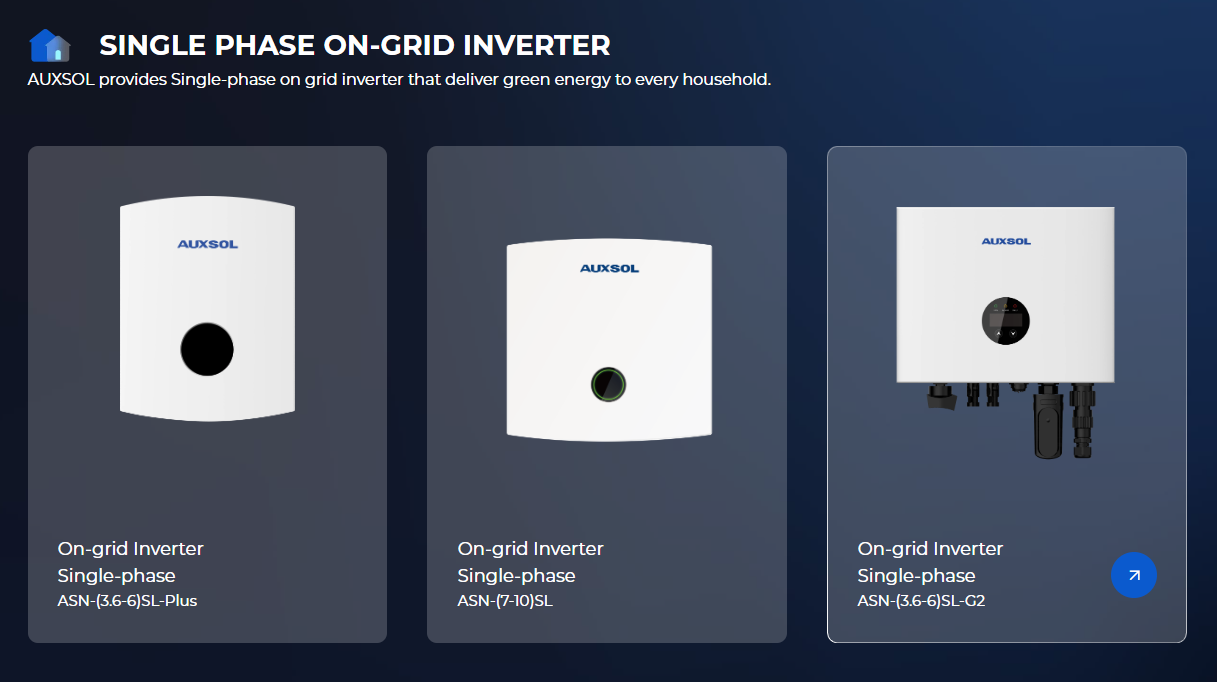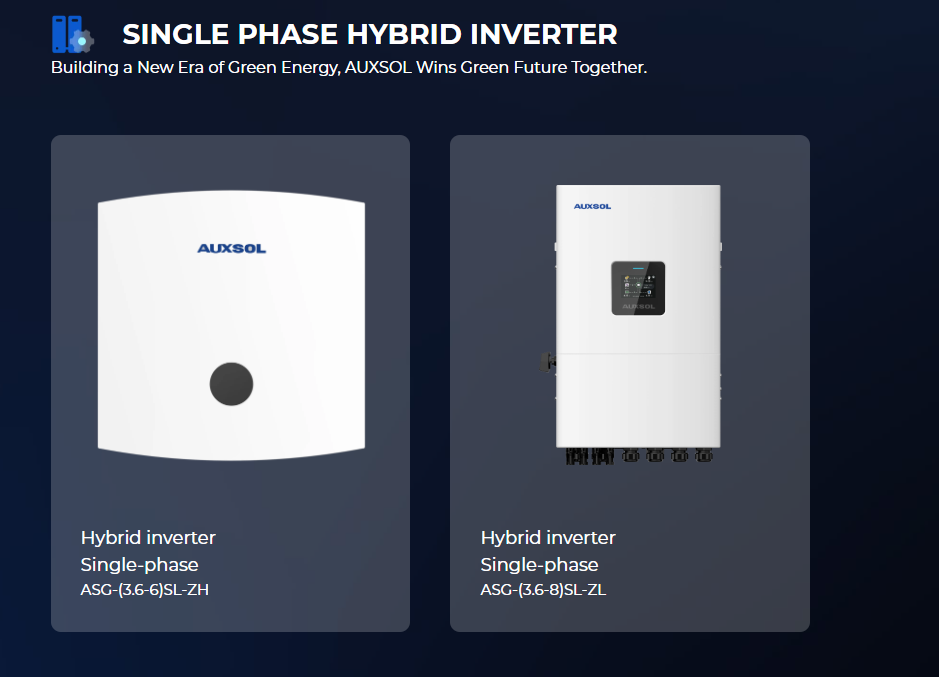What Is a Single-Phase Solar Inverter and Why Does It Matter?
A single-phase solar inverter is a power conversion device designed for homes connected to a single-phase electricity grid. It converts direct current (DC) from solar panels into alternating current (AC) suitable for home appliances and grid supply.
But beyond this definition, users often ask:
-
Is a single-phase inverter powerful enough for my home?
-
Can it support future upgrades like EV chargers or home batteries?
-
What are the installation and safety concerns?
This article answers those questions and more.
Single-Phase Solar Inverters: Best Fit for Residential Use
Most residential buildings—especially in countries like the U.S., Australia, and much of Europe—use single-phase power. A single-phase inverter is ideal for systems in the 3 kW to 8 kW range. It offers:
-
Compact size, easier installation;
-
Lower upfront and maintenance costs;
-
Sufficient output for typical household usage;
-
Compatibility with energy storage systems (in hybrid models).
If your energy usage is moderate and you don’t have large equipment or multiple electric vehicles, a single-phase inverter is often more than sufficient.
AUXSOL Single-Phase Solar Inverters Overview
AUXSOL offers a versatile and high-performance lineup of single-phase solar inverters tailored for residential solar energy systems.
Single-Phase On-Grid Inverters Manufactured by AUXSOL
Compact and lightweight, the AUXSOL ASN series is an ideal choice for residential installations. It offers exceptional durability, a long service life compliant with modern industrial standards, and an IP66 protection rating suitable for both indoor and outdoor environments.
Available Models:
- ASN-(3.6-6)SL-Plus
- ASN-(7-10)SL
- ASN-(3.6-6)SL-G2
Single-Phase Hybrid Inverters Manufactured by AUXSOL
Compact and lightweight, the AUXSOL ASG series is an ideal choice for residential installations. It offers outstanding durability, an extended lifespan in line with modern industrial standards, and an IP66 protection rating suitable for both indoor and outdoor environments.
Available Models:
- ASG-(3.6-6)SL-ZH
- ASG-(3.6-8)SL-ZL
Single-Phase Solar Inverters: Technical Features That Matter
Modern single-phase solar inverters are no longer limited in function. Many models now support advanced features such as:
-
High string current tolerance (up to 20A);
-
Wide MPPT voltage range for optimal energy harvesting;
-
Rapid UPS-level switching (<10ms);
-
Smart energy management and remote diagnostics;
-
Weather-resistant housing (e.g., IP66).
These features ensure smooth performance even under variable solar conditions, and provide flexibility for smart load prioritization.
Key Technical Considerations Before Installing a Single-Phase Inverter
Before installation, be aware of several technical and grid-related aspects:
| Concern |
Guidance |
| Inverter oversizing |
Match inverter rating with total panel output, allowing ~10–15% headroom. |
| Grid voltage fluctuations |
Choose inverters with grid support functions (volt-watt, volt-var). |
| Future expansion |
For potential EV or heat pump usage, consider scalable hybrid models. |
| Phase compatibility |
Can be connected to one leg of a three-phase supply if needed. |
In many regions, solar installers must ensure the inverter is certified for anti-islanding and grid synchronization.
Limitations of Single-Phase Inverters You Should Know
Single-phase inverters do have constraints:
-
Limited capacity compared to three-phase inverters;
-
May create imbalanced loads in a three-phase power system;
-
Less suitable for large commercial or industrial setups;
-
Local grid codes may restrict total inverter capacity per phase.
Therefore, when planning a high-powered system (above 8–10 kW), consider whether a three-phase upgrade is necessary.
Single Phase vs. Three Phase Inverters: Which to Choose?
| Criteria |
Single Phase |
Three Phase |
| Typical usage |
Residential |
Commercial / Large Residential |
| Max system size |
~8 kW |
10–30 kW or more |
| Installation cost |
Lower |
Higher |
| Grid balancing |
Less ideal for large loads |
Better for load distribution |
| EV / battery support |
Supported in hybrid models |
Easier with higher loads |
If your solar system is under 8 kW, and you’re looking for a reliable, scalable, and budget-friendly solution, a single-phase inverter is an excellent fit.


